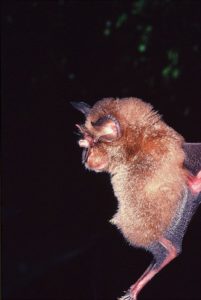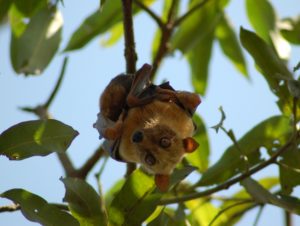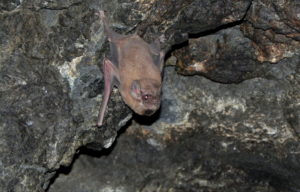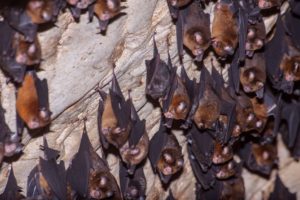
We want to thank Blogger Rachael on her 51st blog post this year! She’s featured almost 30 species. Thank you Rachael. We’re looking forward to what you discover in 2019! Hi everyone! I hope you all had a very Merry Christmas and are enjoying your winter holidays. I am enjoying my school vacation very much. Since this is my last blog post of the year, I thought it would be nice to look back at all that happened this year. It’s been a rather long year that began with the Winter Olympics in Pyeong Chang, South Korea and is ending with a tsunami and volcanic eruptions in Indonesia. In between, there were hurricanes, wild fires, earthquakes, and more volcanic eruptions. It sounds like a bad year, but there were also some good things that happened. Over the summer, 12 members of a youth soccer team and their coach were rescued from an underground cave in Thailand. Not only did we have the Winter Olympics this year, but we also came together for the World Cup in July. And, in what is possibly the cutest news story of the year, an adult male koala needed to be rescued for the third time in his life when he got his head stuck in a fence in South Australia. And now, since the people of Indonesia are having such a difficult time, I thought I’d research another Indonesian bat. I found an adorable leaf nosed bat called the Arcuate horseshoe bat. They were discovered by Wilhelm Peters in 1871. He gave them the name “arcuatus” which is Latin for “curved”. Peters never said why he decided to name these bats curved, but some scientists believe that it is due to the curve of their nose. These adorable furry critters live in Southeast Asia, […]

Hi everyone! I hope you all had a good week! Things went from bad to worse in Indonesia this week. After having both an earthquake and a tsunami last week, a total of three volcanoes erupted this week. These volcanoes are spewing ash into the sky, which makes it difficult to breathe. Once again, I would like to dedicate my blog to the people of Indonesia. I hope things improve for you all very soon. Our esteemed leader, Mrs. Sturges, suggested that I write about the Sulawesi flying fox. The Sulawesi flying fox lives on the islands of Sulawesi and Buton. Sulawesi is the island where there was the earthquake and tsunami. This adorable flying fox has yellow-orange fur and long noses that are perfect for munching on fruit and sucking up pollen. They have big eyes compared to microbats. Sulawesi flying foxes like to eat coconuts, breadfruits, and their favorite, pollen from eucalyptus blossoms. Like a lot of other megabats, Sulawesi flying foxes roost in trees. They are often found hanging in mangrove forests. These bats will sometimes share the trees that they are roosting in with black flying foxes. It works out perfectly for the bats because black flying foxes prefer lower branches and Sulawesi flying foxes like to be up high. Sadly, these bats are listed as vulnerable because of hunting. A lot of Sulawesi roosting trees are being cut down which leaves them unprotected. Sulawesi flying foxes are completely extinct in North Sulawesi because of the hunters. If you would like to read more about the Sulawesi flying fox, you can find information here. I would like to remind everyone that there is another batty event on Saturday, October 13 at 7:00 PM. This event will be at Huntley Meadows Park in Alexandria, VA. Mrs. Sturges […]

Hi everyone! I hope you all had a good week. My week had a sad start because the Nature Fest in Herndon was cancelled because of the rain. It rained pretty much all week, but I think we are supposed to have a sunny weekend. There was another earthquake in Indonesia on Friday. And then after the earthquake there was a tsunami. I would like to dedicate this week’s blog to the people of Indonesia. My thoughts are with you all while you recover from these events. I researched Indonesian bats and I found an absolutely adorable one! It is called the Black-bearded tomb bat. They have a face that reminds me of a shrew with a beard. Its face points outward and they have big round ears on top of their head. Their fur is brown with a little bit of gray and sometimes even red. The dense fur covers most of their body, but it stops before it covers their face. I think this makes their fur look slightly mane-like. The male Black-bearded tomb bats have seasonal black-ish brown beards that they grow to attract mates. Black-bearded tomb bats are found in a variety of places including Indonesia, China, India, Malaysia, Singapore, Vietnam, and Thailand. They roost in rainforests, woodlands, and abandoned buildings. They roost near where they can find their favorite foods. They eat insects like many other bats, but they also enjoy munching on fruit. If you would like to learn more about these bats, you can find information here and here.

Hi everyone! I hope you all had a good week. I went back-to-school shopping. It was fun to buy new clothes for school. The people in Indonesia haven’t been having such a great week. There was a really bad earthquake there. I decided to learn about a bat from Indonesia. I found an adorable bat called the Fawn Leaf-nosed bat. They got their name from their leaf shaped nose. Their nose narrows at the front to make their leaflets more visible than those of other leaf-nosed and horseshoe bats. Another distinguishing feature this bat has is their big ears. Fawn Leaf-nosed bats have adorable triangular ears. They have grayish-brown or orangey colored fur. Like most other bats, these guys eat yummy crunchy insects. They especially like moths and beetles. Fawn Leaf-nosed bats roosts in caves and abandoned mines. They also take shelter in sheds and other buildings. They live in areas close to water, such as rainforests and open Savannah woodlands. These bats range from Southeast Asia and Melanesia to the Coen region and Cape York. If you want to read more about these bats you can do so here.



